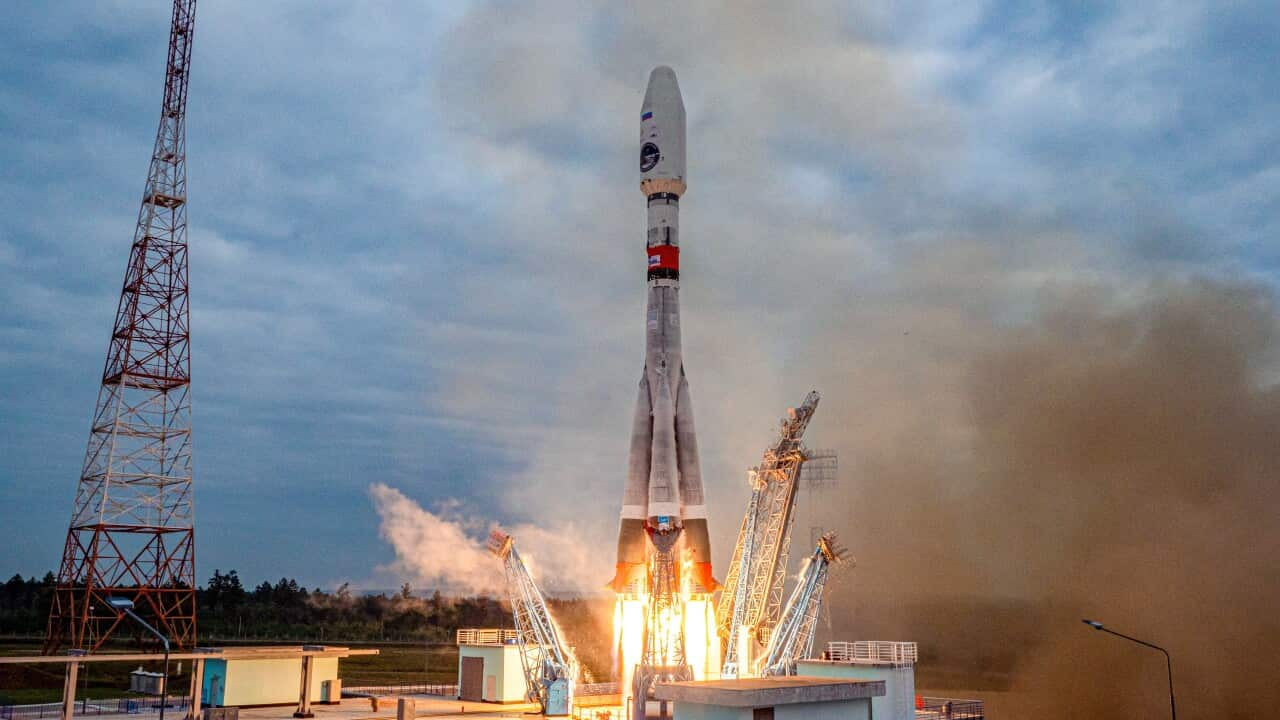Key Points
- Japan has become the fifth country to put a spacecraft on the moon, landing on its surface.
- The spacecraft – SLIM – struggled to generate power from its solar panels.
- The country has increasingly looked to play a bigger role in the aerospace field.
Japan has become the fifth country to put a spacecraft on the moon but the craft was not generating solar power, its space agency said, during a mission to prove a "precision" landing technology and revitalise a space programme that has suffered setbacks.
The Japan Aerospace Exploration Agency (JAXA) said its Smart Lander for Investigating Moon (SLIM) landed on the moon's surface and re-established communication with Earth, but its solar panels were not able to generate electricity, possibly because they are angled wrong.
"SLIM is now operating only on its battery, and we are prioritising the transfer of its data onto earth", Hitoshi Kuninaka, the head of JAXA's research centre, told a press conference.
Despite "life-sustaining treatments" such as turning off its heater, SLIM's battery lasts only for "a few hours", so JAXA will maintain the status quo rather than take risky actions.

The head of Japan's space exploration agency said its spacecraft was now operating only on its battery, which could only last a few hours. Source: AAP / Eugene Hoshiko/AP
"It takes 30 days for the solar angle to change on the moon," Kuninaka said.
"So when the solar direction changes, and the light shines from a different direction, the light could end up hitting the solar cell."
Dubbed the "moon sniper", SLIM attempted to land within 100 metres of its target, versus the conventional accuracy of several kilometres, a technology JAXA says will become a powerful tool in future exploration of hilly moon poles seen as a potential source of oxygen, fuel and water.
"Looking at the trace data, SLIM most certainly achieved a landing with 100-metre accuracy," Kuninaka said, although adding it will take about a month to verify it.
Japan is increasingly looking to play a bigger role in space, partnering with ally the United States to counter China.
Japan is also home to several private-sector space startups and the JAXA aims to send an astronaut to the moon as part of NASA's Artemis program in the next few years.
But the Japanese space agency has recently faced multiple setbacks in rocket development, including the launch failure in March of its new flagship rocket H3 that was meant to match cost-competitiveness against commercial rocket providers like SpaceX.
The failure caused widespread delays in Japan's space missions, including SLIM and a joint lunar exploration with India, which in August with its Chandrayaan-3 probe.

JAXA staff watch a live stream of the spacecraft's moon landing operation. Source: AAP / Eugene Hoshiko/AP
Three lunar missions by Japanese startup Ispace, Russia's space agency and American company Astrobotic have failed in the past year.
Only four nations - the former Soviet Union, the United States, China and India - have previously achieved a soft landing on the moon's surface.










